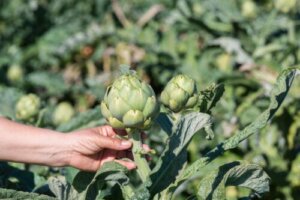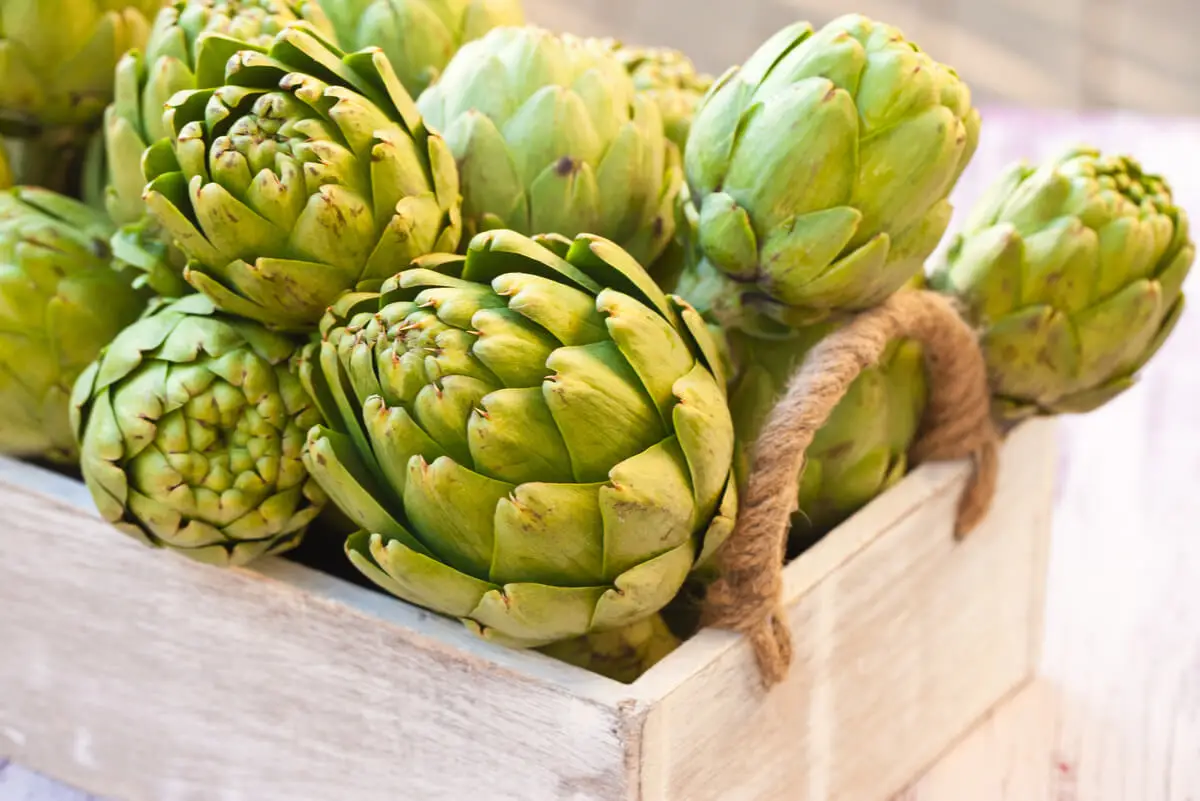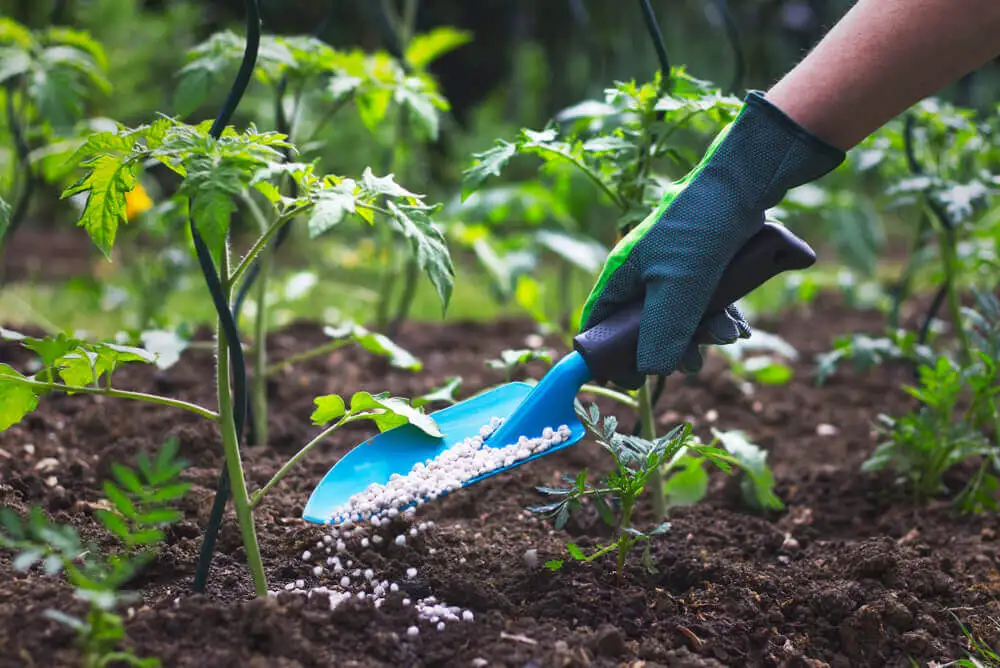Learn How to Plant Artichokes This Winter Season

The artichoke is a food with many beneficial properties, and some wonder how to plant this vegetable during the winter season. If you live in the proper climate and are looking for advice to plant artichokes in the winter, then this article is for you!
After its arrival during the Middle Ages, Spain has become one of the main producers of this vegetable. The artichoke is easy to grow with long, strong leaves, even in a home garden. However, like everything else, it must be properly watered and pruned.
Here, we’ll tell you everything you need to know.
The artichoke: A very nutritious food
Almost the whole plant can be eaten when it comes to artichokes. However, the unripe bud in the center is usually the most common in preparations. Its nutritional properties contain calcium, iron, magnesium, and potassium.
Do you know what the best part is? Today, artichokes have become very versatile. The market offers several presentations that facilitate this vegetable’s consumption. In fact, you can find it canned, frozen, or pickled. However, nothing matches the taste of artichokes in winter!
We know you’ll like to read: The Benefits and Importance of Choosing Seasonal Foods
What’s the ideal season to plant artichokes?
Being aware of the ideal season to plant artichokes is necessary to achieve optimal results. The first thing you need to know is that planting varies according to zones, altitude, heat, rainfall, and soil type:
- Spain and Italy: Artichokes should be sown in winter. October and April are the months of harvesting.
- Chile and Argentina are opposite Spain, so April to November are the best months to consume them.
- United States: The high season for artichoke consumption is March to May.
Here’s what you should consider. Basically, there are two ideal seasons to grow artichokes. One is during the fall, which includes the months of October, November, and early December. Meanwhile, the other is during the spring, scheduled for late March, April, May, and early June.

What’s the worst season to harvest artichokes?
The worst season to harvest and buy artichokes is January and February in the northern hemisphere. On the other hand, in July, August, and September, you can get good artichokes, but at a very high price.
Don’t forget that every vegetable has an ideal season to be planted and harvested. Otherwise, you run the risk of harvesting very young fruit, which tends to taste bitter or too ripe.
A step-by-step guide to planting artichokes in the winter season
In Spain, artichokes are sown using the drip irrigation method, whether it’s the winter season or not. This makes for a better quality vegetable. Let’s take a look at some other tips.
1. Find the right place to plant artichokes
The first steps for an artichoke plant are in well-drained soil with plenty of natural light. Keep in mind that if the soil is waterlogged, both the crown and the root system of the artichoke will be ruined.
If you’re planting artichokes in your garden, be sure to place them next to other plants that don’t compete for the same nutrients. Peas, cabbage, sunflowers, and tarragon are examples.
2. Prepare the soil
Almost all soils are suitable for artichokes, but some are better than others. So, make sure your soil is rich in nutrients and well worked. Organic matter will increase your harvest of quality artichokes.
Squeeze the soil and then open your hand; this is ideal for checking its texture. Well-worked soil won’t clump together with the force of a squeeze, but opening your hand won’t break it apart, either. On the contrary, optimum soil crumbles slowly in the palm.
If you’ve found faults in your soil, that’s OK! Prepare it as follows: dig a row at least 21 centimeters deep and fill it 13 centimeters deep with compost. If your soil area is large, mix 45 kilograms of manure for every 30 square meters.
3. Plant the artichokes
Artichoke seeds don’t always comply with what is described on their packaging. While it’s not mission impossible to grow them from seeds, it takes longer than root divisions.
Consider sowing artichoke seeds in a jar first and waiting 60 days or more until the seedling germinates and grows before transferring it to the garden.
On the other hand, root divisions don’t take as many days and are available at nurseries. When planting, keep in mind that they require more space as artichokes grow.
Plant the plants a considerable distance apart on all sides to prevent this from happening. This will also give you room to water, fertilize, and harvest without hindrance.
4. Trick your artichoke plants
If you see unfavorable results with annual artichokes, you should trick them. To do this, expose the seedlings to cool temperatures during March and April. If temperatures drop below freezing, however, you should shelter them in a greenhouse.
Water in artichokes is necessary to produce tender buds. Try to stimulate them. Try using a deep watering swivel nozzle and water 1-3 times a week, depending on the weather.
If you face a very hot summer, the artichoke buds may open quickly and turn into flowers. You can get around this with overhead irrigation to keep temperatures in check.
5. Provide special fertilizer
Fertilizing the artichoke bed with a special fertilizer gives your planting a good start, full of essential nutrients. Balanced plant food should be provided every two weeks during the growing season.
6. Harvest artichokes
Get a knife and cut from the base of the bud to two centimeters. After harvesting the central bud, smaller but very tender and tasty side buds will germinate on the plant.
7. Pruning the plant is important
Once the artichoke harvest is over, you should prune the plant. This helps it to be ready for the arrival of another season.
To do this, just cut the stem of the plant a few inches off the ground. Then, place a thick mulch of leaves or straw over the stem to protect it from frost.
Consider the following steps for pruning your artichoke plant:
- Cut off the top third from the base of the head.
- Remove two outer layers of the leaves surrounding the stem.
- With a pair of kitchen shears, trim off the sharp tips of each of the remaining outer leaves.

8. Divide the plants
If your artichoke plant is five years old, it’s considered mature. Each artichoke plant generates shoots that begin to gather on the original plant.
So, in this case, it’s suggested that you separate some of these shoots every few years. Choose a rooted shoot, cut it with a gardening knife or dig it up with a shovel.
We think you might like reading: How Many Calories Do We Need? Should We Count Them?
Plant artichokes in the winter
In Spain, artichokes are usually harvested during the autumn and winter seasons. If you want to know how to plant them, consider finding a good spot beforehand, preparing the soil, and providing a good fertilizer.
Planting artichokes in winter is not an impossible task. Like all gardening, it simply requires dedication.
This text is provided for informational purposes only and does not replace consultation with a professional. If in doubt, consult your specialist.








